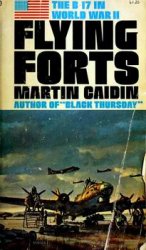Byzantine emperor (1118-1143).
The son of Emperor Alexios I Komnenos and Irene Doukaina, John succeeded his father on 15 August 1118 against the wishes of his mother and his sister Anna Komnene, both of whom favored the latter’s husband, Nikephoros Bryennios. After undertaking campaigns in the Balkans against the nomadic Pechenegs (1122) and the Serbs and Hungarians (1127-1129), John continued his father’s work of reconquest in Asia Minor. His main problem was in dealing with the nomadic Turcomans; the Saljuq emirs were willing to accept him as an overlord. In 1130-1135 and 1139-1142, he fought the Danishmendids in northern Anatolia, temporarily capturing Kastamoni and Gangra. In western Asia Minor, his recapture of Sozopolis of Pisidia (mod. Uluborlu, Turkey) and Laodikeia in Phrygia (near mod. Denizli, Turkey) established a safe land route from the Maeander Valley to the port of Attaleia (mod. Antalya, Turkey) on the southern coast, an important link with Cilicia and Cyprus.
John was also concerned to implement the terms of the Treaty of Devol (1108) and to regain control of Antioch (mod. Antakya, Turkey) from the Franks. To this end, he made alliances with the German rulers Lothar III and Conrad III against the Normans of Sicily in order to prevent them from becoming actively involved in the affairs of the Holy Land. He also made friendly overtures to Pope Innocent II on the subject of church union, hoping to gain papal recognition for the role of the Byzantine emperor as the protector of Eastern Christians and an end to the Latin patriarchates in Jerusalem and Antioch.
In 1135, John attempted to arrange a marriage between his youngest son, Manuel, and Constance, the heiress of Antioch, as part of a wider plan to create a domain for Manuel including Antioch, Cilicia, Attaleia, and Cyprus. After this proposal failed, John marched to Antioch and invested it in 1137. He undertook a joint campaign into Syria with Raymond of Poi-ters, who had married Constance and thus become prince of Antioch, and Joscelin II of Edessa, but this enterprise failed amid mutual recriminations. On his return to Antioch, John was forced to withdraw after anti-Byzantine riots were stirred up by the two Frankish princes (1138).
In 1142, John again threatened Antioch, but the campaign was abruptly ended by his death the next year, supposedly in a hunting accident, but possibly as the result of a plot against him involving Western mercenaries. John is portrayed, together with his wife, Irene (Piroshka of Hungary), and his son Alexios in a mosaic that still survives in the Church of Hagia Sophia in Constantinople (mod. Istanbul, Turkey).
-Rosemary Morris
Bibliography
Magdalino, Paul, The Empire of Manuel I Komnenos (Cambridge: Cambridge University Press, 1993).




 World History
World History









